
Different Types Of Pearls

Pearls have long been a symbol of beauty and purity. They are contemporary classics, and now there are far more fashionable options to choose from than the strand of pearls you remember hanging from your grandmother’s neck.
There are several types of pearls you can choose from to add stunning pieces to your jewellery collection.
Types of Pearls
Pearls are formed when irritants (like sand, for instance) find their way into the shell of a mollusc. In reaction, the mollusc begins to produce layers of nacre around the irritant. In natural pearls, the irritant generally comes from the water it's surrounded by, while in cultured pearls, people insert a piece of tissue to get the process started.

In both instances of pearl formation, the nacre quality will dictate the quality of the pearl’s lustre and shine. This is key to both its value and its beauty. The pearl’s surface should be smooth and free of marks. The shape itself may be round, misshapen, or pear-shaped. The misshapen ones are referred to as baroque pearls.
When you are shopping for pearls, remember they are available in a variety of lengths:
The pearl collar fits against the throat.
The pearl choker rests at the neck base.
The princess length (17-19 inches) generally rests near the collarbone.
The matinee length runs around 20 – 24 inches.
The opera length is much longer, at 30-36 inches.
The rope length is the longest option, describing any strand longer than 36 inches.
There are two classes of necklace:
Graduated, where the pearl sizes change from end to centre
Uniform, where all of the pearls are around the same size.
Natural Pearls
Traditionally, most natural pearls were found in the Persian Gulf. However, the majority of them have already been harvested, therefore natural pearls are tremendously rare. You may find small, natural pearls available for purchase, but they are costly.
Cultured Pearls
Cultured pearls are a type of pearl grown on a pearl farm. Molluscs are farm-raised and once they are old enough, a technician will implant a mother-of-pearl bead. The molluscs are then returned to the water and cared for while the pearls are allowed to form.
Not every mollusc will produce a pearl, and not all of them will be of high quality. Over ten thousand pearls may need to be sorted through before a single princess length of uniformed pearls can be matched.
Pearls can be found in both freshwater and saltwater — additionally, various molluscs can produce different-looking pearls. Read more about Cultured Pearls here.
Saltwater Pearls
Akoya Pearl

This cultured pearl is grown in Chinese and Japanese waters. They are generally around 2mm, but in some rare cases can be as large as 10mm. They are round, and usually cream or white coloured. They come from the Pinctada fucata martensii oyster, which are fairly small- thus produce the smaller pearls. Akoyas were originally imported to the US by Mikimoto. Though, the quality has fallen off due to the primary source of the pearls being moved to China. Despite that, Mikimoto is still the most widely distributed brand of the pearl. Mikimoto branded pearls command a premium price, that doesn’t always match the quality being sold.
South Sea Pearl
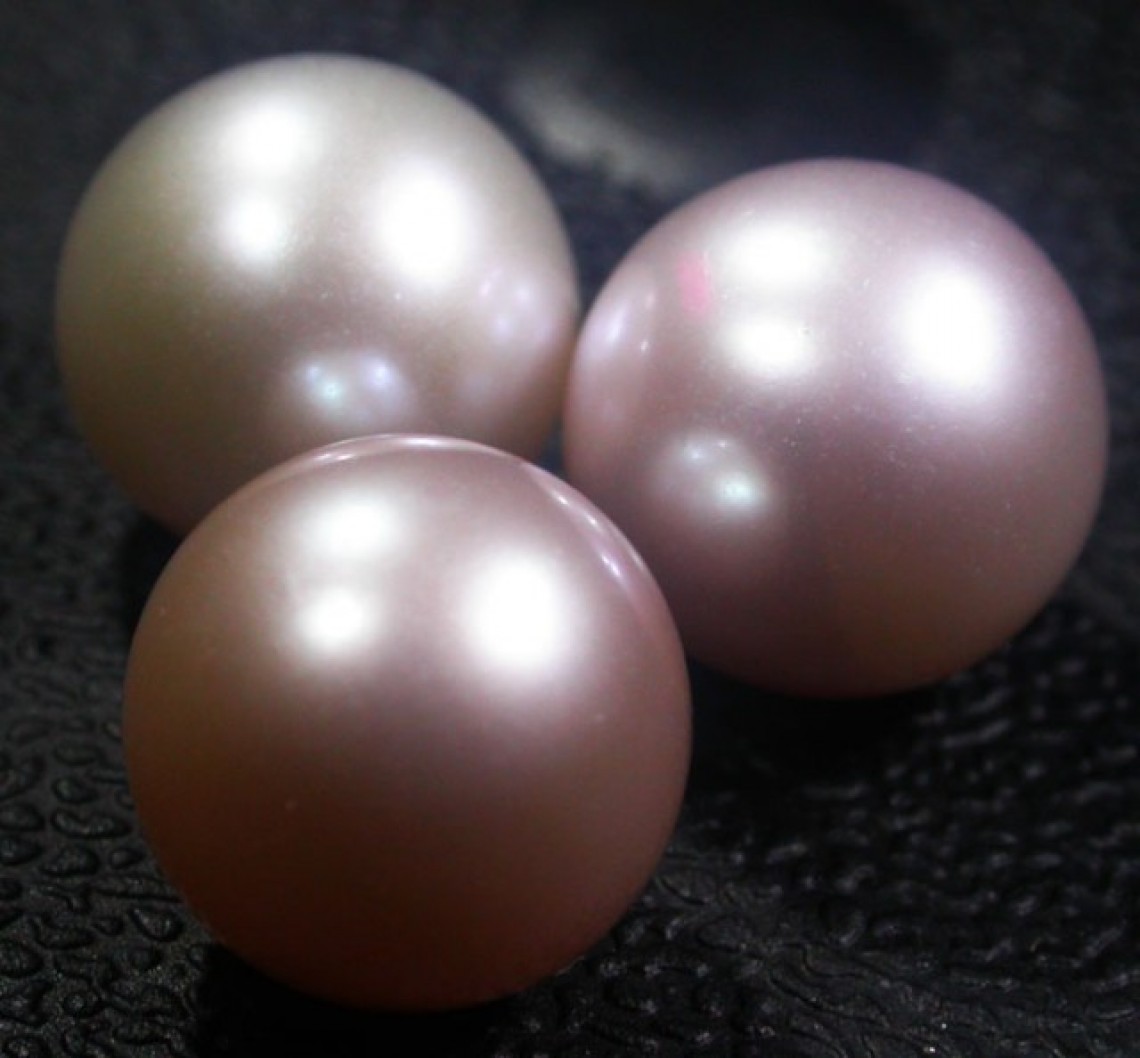
This pearl is produced in the Philippines, Australia, and Indonesia. It’s the largest of all pearls and ranges in size from 9mm to 20mm. They can be cream, white, or golden and are harvested from the oyster Pinctada maxima.
Tahitian Pearl

Despite the name, Tahitian pearls are not exclusively produced from Tahiti. They’re grown throughout several of the French Polynesian islands. Their size generally ranges between 8mm and 16mm. These pearls are naturally coloured in ranges of blue, purple, green and grey, but they are collectively known as black pearls. The Tahitian pearl comes from the black lip oyster, Pinctada margaritifera.
Tahitian pearls are considered the most striking, sought-after pearls on the market nowadays. While they are often described as black, their colours cover the complete spectrum from dark-black to silver-white, and almost every colour in between, including the most accepted peacock and green. The colors of these Tahitian pearls are completely natural and guaranteed to be unprocessed. For the most stylish pearls, consider a full strand of Tahitian pearls.
Blue Pearls
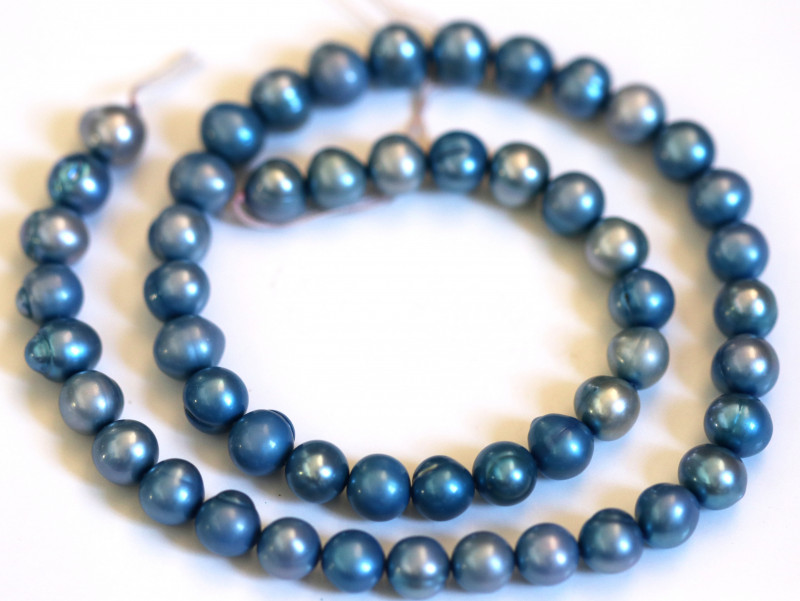
These are formed in the Paua mollusc, which is an Abalone variety. They are available in a broad range of blue, though they come in other colours, such as golds, pinks, greens, reds, and violet. There is a chameleon quality to them, with the light causing colours to change. It’s these colour changes that give each pearl its own distinctive character.
Freshwater Pearls
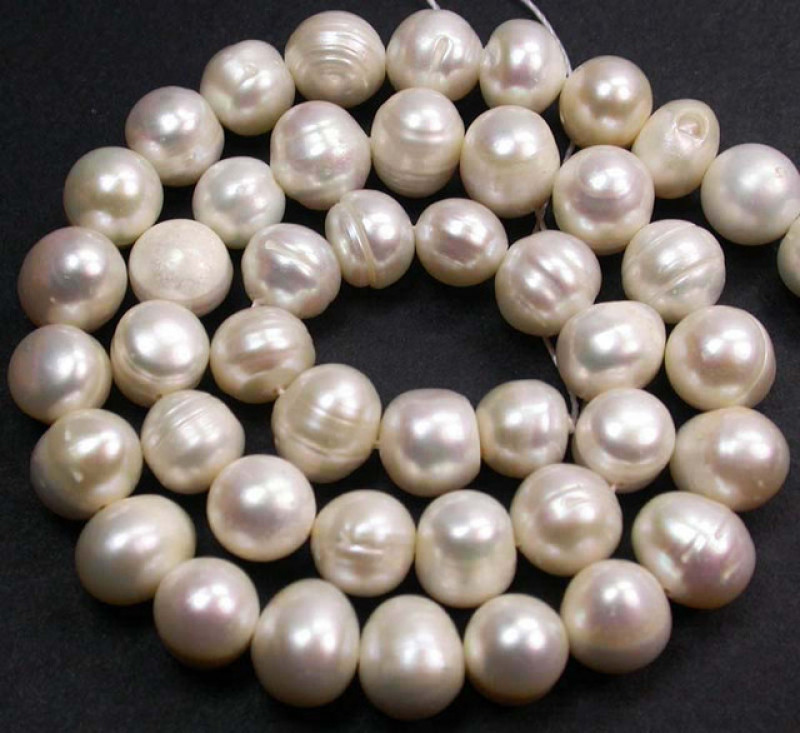
These types of pearls are generally grown in rivers, ponds, and lakes- and predominantly in China. Many of these are white and generally resemble the Akoya Pearl in both size and shape. However, they can be produced in varying shapes and a range of pastel colours.
The majority of freshwater pearls don’t have a bead nucleus, just a piece of tissue that results in a thicker nacred pearl than the cultured Akoya pearl.
Mabe Pearls
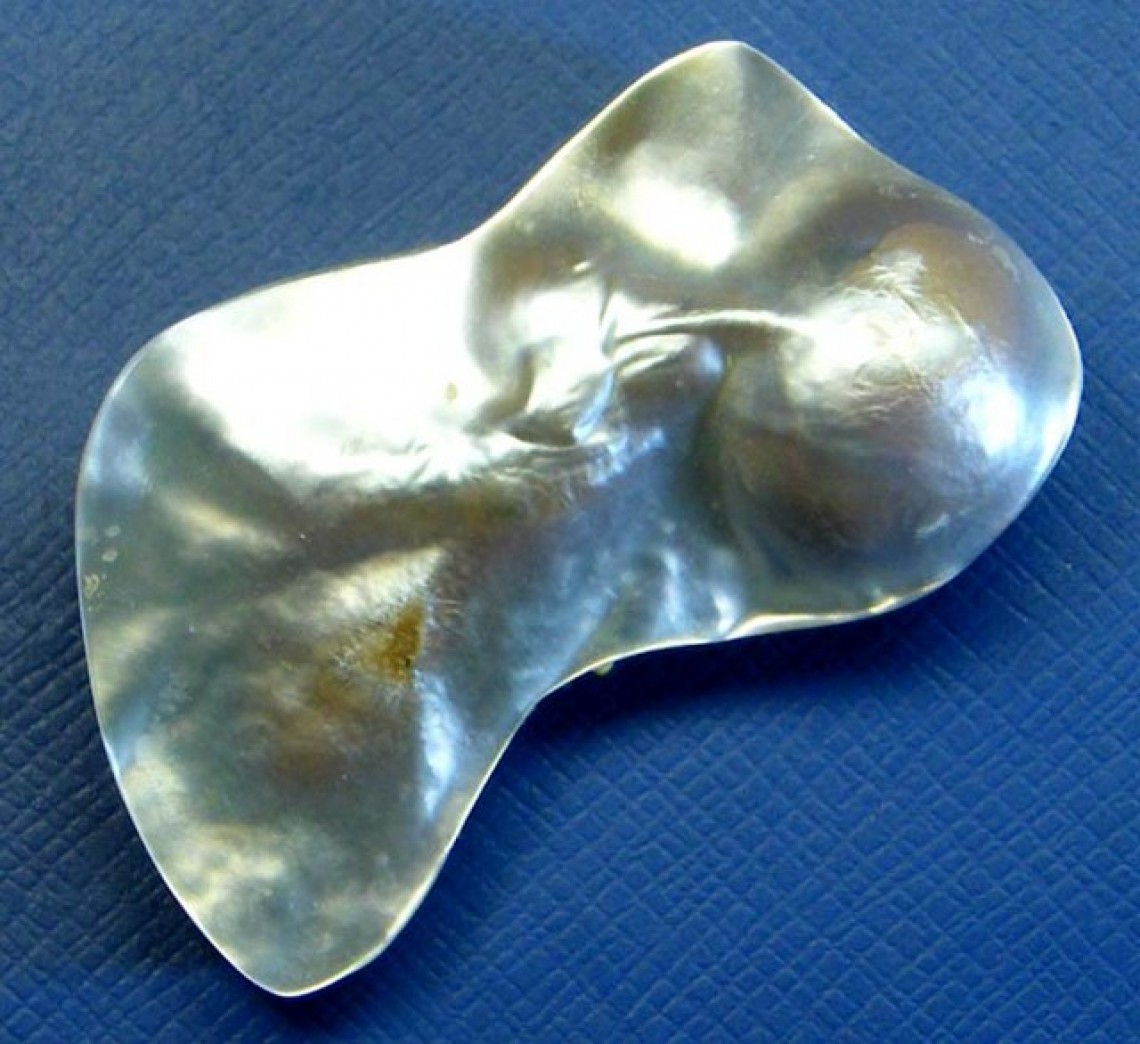
Mabe pearls are quite diverse from what other people might think about “normal” pearls. The explanation for this stems from the manner in which mabe pearls are produced. They are also considered to be “semi-spherical refined pearls." Instead of growing within the body of the mollusc, like other pearls, it grows inside the shell.
This method causes mabe pearls to produce a flat side, as opposed to being fairly spherical (or at least curved) like standard pearls. This also explains why mabe pearls are regularly referred to as “half pearls." Mabe pearls are most regularly produced inside saltwater oysters from the regions of Australia, Indonesia, Japan, and French Polynesia.
Moreover, these pearls come in an extensive range of beautiful pearl colors, from light pinks to more bluish colors. The exclusive nacre of the mabe oyster enables the sparkling and rainbow-like hues. Their vividness is quite remarkable at times, particularly in the rarest colour: pink with gold swirls.
The mabe pearl oyster is also well-known as the "penguin wing oyster" and is used as the mother shell. These pearls are highly-distributed all over the world along steamy and semi-tropical seas, making them readily accessible to various pearl farmers worldwide.
Keshi Pearls
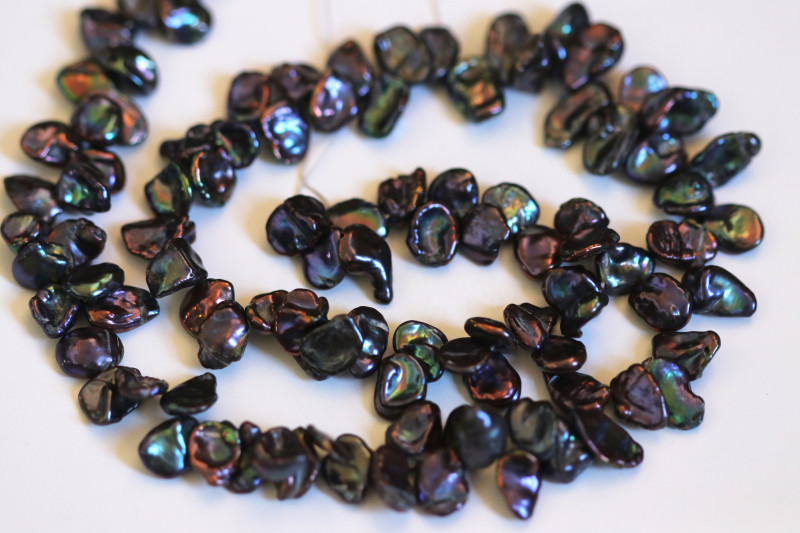
In Japanese, Keshi means “poppy seed." The word is used to depict smaller-than-average, seed-sized pearls originated as by-products of the pearl culturing method. Once the debris enters an oyster during the harvesting process, this oyster encloses the debris with nacre, thus producing Keshi pearls.
Some additional shapes for Keshi pearls include flat, rectangle, oval, or off-round (seemingly round but actually slightly flat or oval). These pearls arrive in different colours, such as white, rose, grey, black, and many more. Due to their broad nacre composition, they are extremely glossy and flickering. However, South Sea Keshi pearl and Tahitian Keshi pearl are the most popular varieties.
Imitation Pearls
Imitation pearls are usually just a glass bead that has been coated. They tend to have a high lustre, but not to the same depth as high-quality cultured pearls.
It should be relatively easy to separate an imitation pearl from a natural or cultured pearl. However, it can be challenging to differentiate between natural pearls and cultured pearls. Additionally, many pearls go through treatment processes to alter their colour and enhance their lustre.
The treatment affects the value, so it’s important to obtain advice from an experienced jeweller or gemologist.
Pearl Grades
The most difficult aspect of choosing a pearl is the grading. Unfortunately, there is no standard or recognized system for pearl grading. However, Tahitian pearls are slightly different, as the export and grading are under the control of the French Polynesian government.
Pearl Care
As one of the world’s only organic gemstones, pearls are rather delicate. Taking proper care of your pearls is an essential aspect of ensuring your investment lasts a lifetime. Many personal hygiene products like hand sanitizer or beauty products such as hairspray and perfume can damage the beauty and lustre of a peal. You should always invest in a pearl care kit for your pearl jewellery.
Holistic Aspects Of Pearls
Pearls are one of the traditional June birthstones. They're believed to symbolize clarity, virtue, and conviction. They also enhance personal reliability and facilitate clearing the mind so that it can be a fresh channel for astuteness and spiritual awareness.
These gems were once considered tears of gods. These are moon- and water-ruled stones that enhance sincerity, wisdom, and fidelity. Pearls also bring a soothing effect as well, attuning you to the ebb and flow of life.
They are believed to provide clarity, trust, and reliability, especially personal truthfulness. Due to its diluted and lunar factors, the pearl is quite good for balancing emotions. Pearls facilitate an individual to connect with Goddess energy, the ultimate feminine power.

Emotional Pearl Spiritual Properties
Pearls are captivating by nature and because of this, they must be used with concern. If you feel extremely negative while using a pearl, it will hold that energy until it is used again. Pearl is produced by a layer of substance to offset irritation, making it potentially nurturing. If this is used accurately, it can minimize stress and relieve maladies such as hypertension, headaches, and fatigue.
If using peals with other stones, consider diamonds to strengthen and distill, taking the harmful energy out and diffusing it as much as possible. Additionally, it is believed that drinking pearl water habitually over a long period of time will balance hormones. Persistent headaches and migraines may be treated by using a pearl necklace directly on the skin.

The pearl can also assist in decreasing allergies. They are said to facilitate the treatment of stomachaches, bronchitis, colds, and lung infections. Pearls, like amber, fossils, mother of pearl, and other matters used in magic, are the artifacts of a living creature. Some individuals believe that, because there is evidence many oysters die to remove the pearl, there is a serious debt gained by those involved in trafficking pearls, as well as those who wear and use them.
In energy healing, pearls are closely linked to the moon, so anyone who uses or wears them can balance and treat all chakras.
The pearl also helps when you're searching for higher awareness and truth. It will soak up unhelpful energy from anybody who uses it, then, help the individuals to perceive and deal with the reality of self.
SHOP FOR YOUR OWN PEARLS
Search the Gemstone Encyclopedia
Related Auctions
Related Articles
Azotic treatment of Topaz and Quartz is a treatment that creates a layer of color over a gemstone. Learn more about this treatment and check out our stones fro sale.
8th May 2018
There are dozens of quartz and chalcedony gems with various colors and patterns. Learn all about quartz properties and every type of quartz, from amethyst and agate to plasma and phantom quartz!
15th Oct 2020
Tahitian Pearls are the beautiful darker colored Pearls that come in so many different shapes, sizes and colors.. Learn more about this gemstone and browse the beautifully pearls we have for sale.
9th May 2018
Latest Articles
Yugawaralite is a rare colorless, white, or pinkish zeolite crystal named for its discovery in Yugawara, Japan. Here we uncover the multifaceted history, properties, prices, and uses of yugawaralite.
24th Mar 2025
Simpsonite is a lesser-known mineral known on the gem market for its durability, yellow-orange color, and rarity. Discover all the properties, uses, prices, and history of simpsonite.
3rd Mar 2025
Kurnakovite is a colorless crystal related to inderite and rarely faceted but known among collectors. Explore the mineral traits, history, prices, and more in this kurnakovite guide.
17th Feb 2025
Article Categories
How To's is where you will find helpful articles from gem Rock Auctions on how to cut gemstones, select gemstones and buy gemstones.
9 Articles





